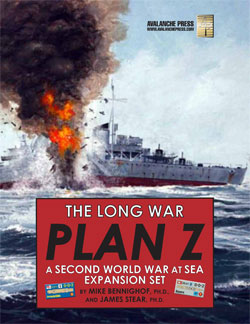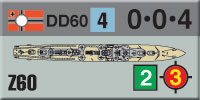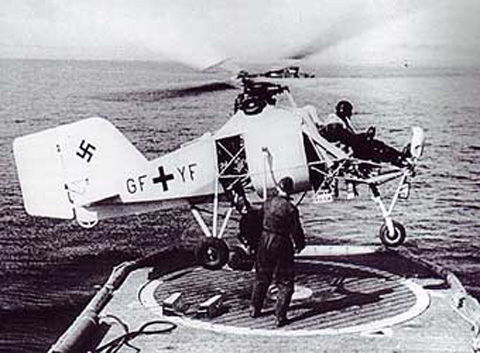Plan Z:
German Destroyers, Part Two
by Mike Bennighof, Ph.D.
April 2022
 German destroyer development branched into multiple directions, with most “destroyers” maximized for surface combat while the slightly smaller vessels classed as “torpedo boats” would handle escort and other missions typically assigned to destroyers by other navies. German destroyer development branched into multiple directions, with most “destroyers” maximized for surface combat while the slightly smaller vessels classed as “torpedo boats” would handle escort and other missions typically assigned to destroyers by other navies.
The German Navy continued to design and build destroyers until the end of World War II, well after any hope to complete the fleet foreseen in Plan Z had been abandoned. While some projected German destroyer designs were clearly predicated on construction of the big ships of Plan Z – so they could accompany the battleships and battle cruisers on the high seas – others would likely have been built regardless, to carry out other needed missions.
Most obvious of these is the 1938B Type destroyer, a “small, coastal destroyer” designed for operations in the Baltic and North Sea (the very large 1938A Type would eventually evolve into the Scout Cruiser). She would be smaller and cheaper than the big destroyers then being designed to accompany the fleet, but with greater range, durability and armament than the new “Fleet Torpedo Boats” also on the drawing tables.
The 1938B Type sketches drew heavily on German torpedo boat design practice, sharing the flush deck and blocky bridge structure of the 1935 Type torpedo boat. Following the predilection toward giantism among German naval architects of the 1930’s, when asked for a small destroyer, they produced a huge torpedo boat.
 The new boat would carry four 127mm guns in two twin gunhouses, one fore and one aft, plus eight torpedo tubes, four depth-charge throwers and a grossly inadequate array of light anti-aircraft guns. She was also fitted for minelaying. The Type 1938B was still a large destroyer by most standards (just under 2,000 tons’ standard displacement, more than 2,700 tons full load), with good range (3,300 sea miles, though this was less than that of the Fleet Torpedo Boats). The new boat would carry four 127mm guns in two twin gunhouses, one fore and one aft, plus eight torpedo tubes, four depth-charge throwers and a grossly inadequate array of light anti-aircraft guns. She was also fitted for minelaying. The Type 1938B was still a large destroyer by most standards (just under 2,000 tons’ standard displacement, more than 2,700 tons full load), with good range (3,300 sea miles, though this was less than that of the Fleet Torpedo Boats).
She would carry the hyper-complex high-pressure steam power plant of most German destroyers and torpedo boats, though a design study looked at fitting her with diesels instead. With the Wagner boilers and turbines, she was expected to produce 50,000 horsepower for a speed of 36 knots
Contracts were placed for a dozen boats in June and July 1939, numbered Z31 through Z42, but later altered to the larger Type 1936A (Mob) design. Our Second World War at Sea: Plan Z expansion set includes all 12, but they’re numbered Z64 through Z75 since their original designations are already in use by the replacement destroyers.
At the opposite end of the scale, the Type 1945 destroyer was another huge boat, maximized for surface combat capability and an enormous range. To achieve this, she reverted from the diesel power plant of the Type 1944 to the Wagner high-pressure steam boilers and turbines, combined with a shorter and slightly narrower hull. Despite the smaller hull, the designers met a Navy requirement by cramming on a fourth dual gunhouse for two more 128mm dual-purpose guns, making a total of eight such weapons.
 That made for an odd-looking design, but the Type 1944 from which it was clearly derived was a very large boat thanks to the space needed for its diesel power plant. She does look like she might have been top-heavy in practice, though the unarmored gunhouses would have been much lighter than a real turret. Like the preceding design she would have had a full set of reloads for her eight torpedo tubes, contrary to earlier German practice. She would be fitted to carry more mines than the 1944 Type, and the standard quarter of depth-charge throwers. That made for an odd-looking design, but the Type 1944 from which it was clearly derived was a very large boat thanks to the space needed for its diesel power plant. She does look like she might have been top-heavy in practice, though the unarmored gunhouses would have been much lighter than a real turret. Like the preceding design she would have had a full set of reloads for her eight torpedo tubes, contrary to earlier German practice. She would be fitted to carry more mines than the 1944 Type, and the standard quarter of depth-charge throwers.
With her shortened hull and more powerful machinery, the Type 1945 was expected to make an astonishing 39 knots. She would also carry a great deal of fuel, for a range of 8,000 nautical miles – the same as a Hipper-class heavy cruiser, and enough to allow the destroyer to serve as a commerce raider in her own right.
The Type 1945 design would have had a similar anti-aircraft suite to her predecessor, made up of 55mm and 30mm guns that did not yet exist at the time her plans were drawn – indicating that the architects knew the boats would never actually be built. No contracts were ever placed for these destroyers, but that didn’t stop us from including four of them in Second World War at Sea: Plan Z, numbered Z60 through Z63.
 In addition to massive and impractical destroyers, the German Navy’s Design Bureau also drew plans for a class of destroyer-sized anti-submarine escorts that would become the first warships designed to carry a helicopter, in this case the small Flettner Fl.282 Kolibri (over there on the right). In addition to massive and impractical destroyers, the German Navy’s Design Bureau also drew plans for a class of destroyer-sized anti-submarine escorts that would become the first warships designed to carry a helicopter, in this case the small Flettner Fl.282 Kolibri (over there on the right).
The G.1 (“G” for geleitboot, or “escort vessel”) was drawn up in 1941, well after the sunset of hopes for Plan Z’s fulfillment but we’ve included her in our Second World War at Sea: Plan Z expansion set because helicopters. The design was based on the gunboat K.1 (which also appears in Plan Z), a small and hopelessly outdated craft drafted in 1938. The gunboat would have had four 105mm guns in two twin mountings, one fore and one aft, and been powered by triple-expansion engines (machinery abandoned by most warship designers a quarter-century earlier) for a speed of 18 knots.
Four of them would have been built at the politically-connected H.C. Stülcken Sohn yard in Hamburg, for no apparent purpose. All were cancelled in September 1939 and replaced by contracts for new submarines. The yard also later received its very own slave labor camp.
 The new Flettner Fl.282 helicopter underwent successful landing and takeoff tests on the light cruiser Köln in 1941, leading the Kriegsmarine to request a new helicopter-capable escort vessel. The Design Bureau dusted off the gunboat design, stretching her slightly to provide room for the helicopter landing pad and providing a more modern power plant. She would now make 21 knots and carry a much heavier anti-aircraft armament than the gunboat along with depth-charge throwers. In yet another example of mission creep in German warship design, she would also be fitted to lay mines. The new Flettner Fl.282 helicopter underwent successful landing and takeoff tests on the light cruiser Köln in 1941, leading the Kriegsmarine to request a new helicopter-capable escort vessel. The Design Bureau dusted off the gunboat design, stretching her slightly to provide room for the helicopter landing pad and providing a more modern power plant. She would now make 21 knots and carry a much heavier anti-aircraft armament than the gunboat along with depth-charge throwers. In yet another example of mission creep in German warship design, she would also be fitted to lay mines.
Four ships were ordered from H.C. Stülcken Sohn, and 20 more from shipyards in the occupied Netherlands. Only one ship, G.1, was actually laid down but would be destroyed by a British air attack before she was complete. Second World War at Sea: Plan Z includes seven examples of the helicopter-equipped escort. Though not strictly a part of Plan Z, we really couldn’t pass up a helicopter-carrying ship.
Click here to order Second World War at Sea: Plan Z (book edition) right now.
Sign up for our newsletter right here. Your info will never be sold or transferred; we'll just use it to update you on new games and new offers.
Mike Bennighof is president of Avalanche Press and holds a doctorate in history from Emory University. A Fulbright Scholar and NASA Journalist in Space finalist, he has published a great many books, games and articles on historical subjects; people are saying that some of them are actually good.
He lives in Birmingham, Alabama with his wife, three children, and his Iron Dog, Leopold.
Want to keep Daily Content free of third-party ads? You can send us some love (and cash) through this link right here.
|
